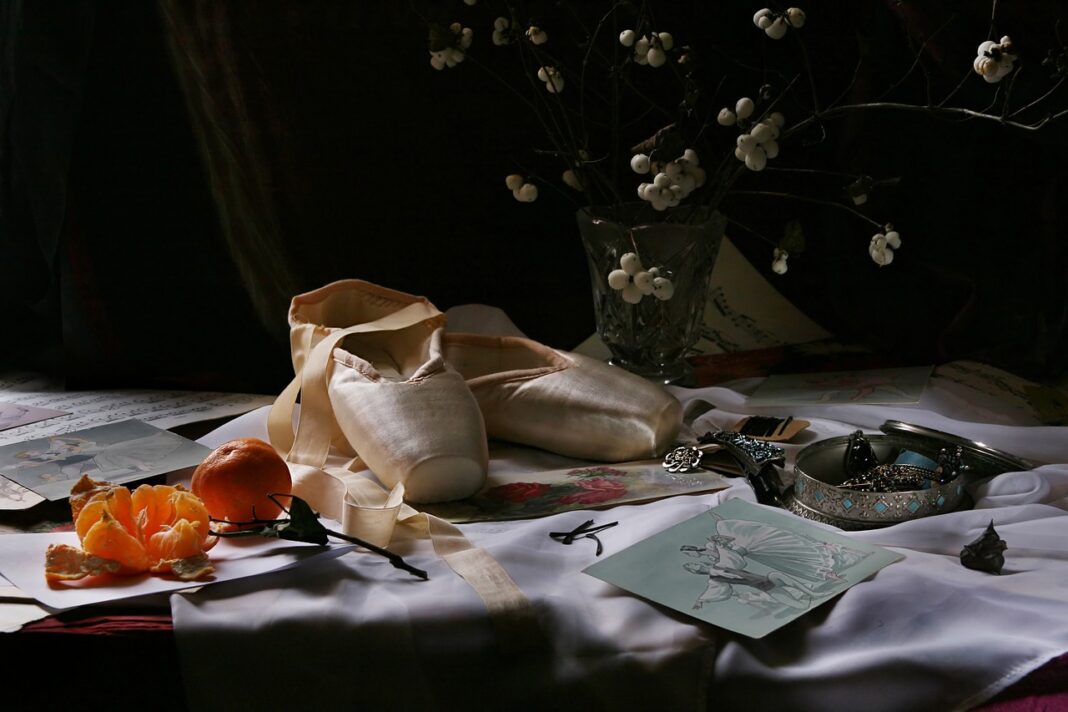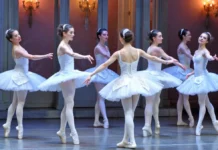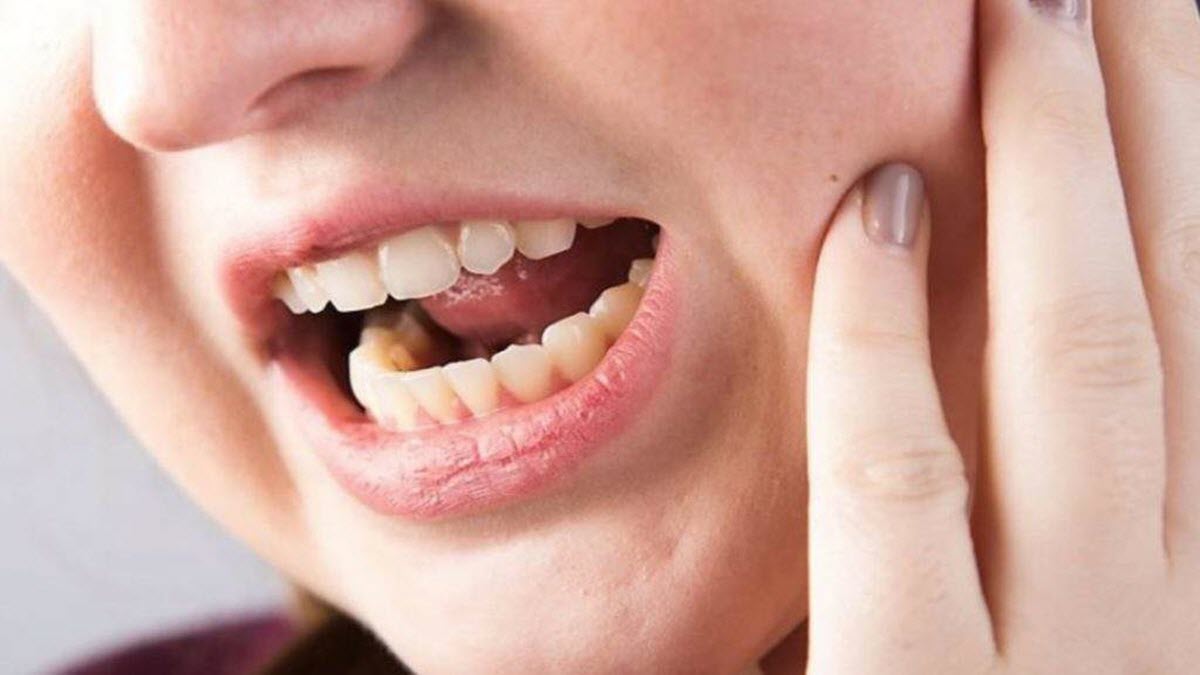Introduction
The en pointe ballet position, often admired for its finesse and elegance, can unfortunately lead to serious ankle injuries. Behind the graceful appearance of this posture lies a potential nightmare.
During dorsiflexion and plantarflexion, the inferior tibiofibular joint separates, and the fibula moves up and down. If the fibula’s motion is compromised, it may be due to restriction at the knee, the action of the thigh muscles inserting on it, or ligament disruption due to an ankle injury. These factors can lead to altered ankle biomechanics, compromising the integrity of the foot.
Pointe dancers should be aware of the risks associated with this position. It is essential to include specific strengthening and flexibility exercises to prevent injuries. Knee stability, in particular, plays a crucial role in preserving the natural movement of the fibula during pointe dancing.
Injury prevention in pointe dancing is not limited to just the musculature. Special attention must be paid to the dance surface, ensuring that it is adequately cushioned to reduce the impact on the feet and ankles. The pointe shoes themselves must be tailored to the dancer’s individual morphology to ensure an optimal fit.
Additionally, the importance of rehabilitation after an ankle injury cannot be underestimated. Dancers must be vigilant about managing existing injuries and taking appropriate measures to promote healing. Ignoring early signs of problems can lead to long-term complications.
Beyond prevention and rehabilitation, it is crucial to address dancers’ mental health. The aesthetic expectations of pointe dancing can sometimes lead to excessive pressure to maintain a certain physical appearance. It is essential to foster an environment where health and well-being prevail over rigid aesthetic standards.
Dancers should also be educated on recognizing the signs of overuse and fatigue. Overuse of the feet and ankles without adequate rest periods can increase the risk of injury. Incorporating recovery and active care into the training routine can help maintain long-term health.
In conclusion, en pointe dancing, while beautiful, carries inherent risks. It is imperative that dancers and dance professionals are well-informed about biomechanics, injury prevention practices, and the care needed to ensure the safety and sustainability of en pointe performances. The beauty of en pointe dancing should not be compromised by preventable injuries, but rather celebrated in the grace and vitality of a well-rounded practice.
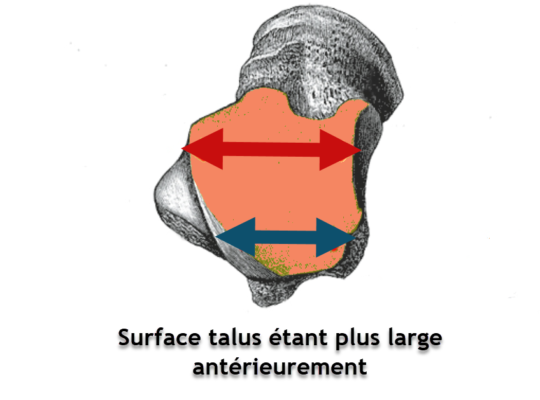
Movement of the fibula at the ankle. As the ankle dorsiflexes, the anterior portion of the talus that is wider than the talus wedges into the mortise and the fibula rises. When the mortise is fully expanded, it prevents further dorsiflexion. During plantar flexion, the narrow portion of the talus presents and the fibula descends.
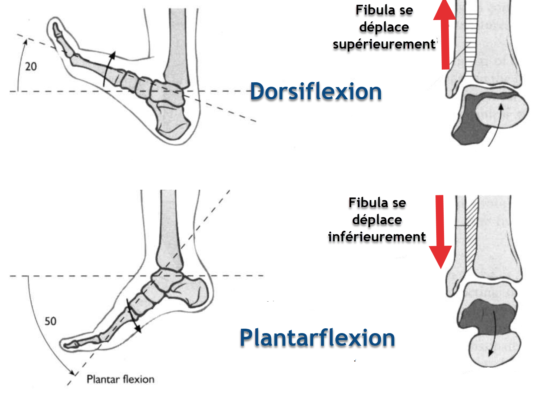
When the foot is in a plantarflexed position, ankle stability is compromised, particularly because the ankle joint is located at the narrowest part of the talus. This anatomical configuration makes the ankle more vulnerable to injury, especially when practicing sports that require being on the tips of the toes, such as ballet. In this demanding artistic discipline, where dancing on pointe is a signature feature, dancers are at increased risk of ankle injuries.
To minimize these risks, it is highly recommended to use an ankle support. This device provides additional structural support, reinforcing the stability of the ankle and thus reducing the chances of injury. In particular, ballet dancers, whose practice often relies on complex and demanding movements for the feet, can benefit from the proactive use of these supports.
The ankle support acts as an essential preventative measure by providing targeted support during critical moments, such as intense plantarflexion. It helps maintain proper ankle alignment, limiting excessive movements that could lead to injury.
In conclusion, understanding the vulnerability of the ankle in plantarflexion, especially in activities such as ballet, highlights the importance of taking preventive measures. The use of ankle supports should be integrated as a proactive strategy to maintain the health and performance of dancers, thus ensuring continued and safe practice of pointe dance.

Prevention
Preventing ankle injuries, especially in activities that involve plantar flexion, is paramount to maintaining overall foot health and performance. Whether in ballet or other sports that require toe-off, implementing effective preventative measures is crucial. Here are some key strategies for preventing ankle injuries:
- Proper Warm-Up: Begin each session with a thorough warm-up routine that includes dynamic stretches and ankle mobility exercises. This helps prepare the muscles, tendons, and ligaments for the demands of plantar flexion.
- Strength Training: Incorporate strength training exercises that focus on the muscles surrounding the ankle, including the calves, peroneals, and intrinsic muscles of the foot. Strengthening these muscle groups improves stability and supports the ankle joint during plantar flexion.
- Flexibility exercises: Regularly perform stretching exercises that target the ankle’s range of motion. Proper flexibility can reduce the risk of strains and sprains during activities that involve the ball of the toes.
- Proper Technique: Emphasize correct form and technique, especially in activities such as ballet. Ensuring proper body alignment and foot placement reduces unnecessary stress on the ankle joint.
- Choice of shoes: Select appropriate shoes, especially in ballet where pointe shoes play a crucial role. Make sure the shoes provide adequate support, fit properly and are well maintained to improve stability while moving on the toes.
- Surface Awareness: Be aware of the dance or practice surface. A level, well-cushioned, shock-absorbing floor can help reduce the impact on your feet and ankles during activities like ballet.
- Gradual Progression: Gradually progress in intensity and duration, allowing the body to adapt to the demands of plantar flexion. Sudden increases in workload can contribute to overuse injuries.
- Rehabilitation exercises: If you have a previous ankle injury, follow a personalized rehabilitation program recommended by a healthcare professional. Addressing weaknesses and imbalances can help prevent future injuries.
- Regular rest and recovery: Ensure adequate rest between dance sessions or intense workouts. Allowing the body to recover is essential to prevent fatigue-related injuries.
- Consultation with professionals: Consult with health professionals or dance instructors to assess and treat individual biomechanical factors or technique issues that may be contributing to ankle instability.
- Ankle braces or supports: Consider using ankle braces or supports, especially during high-impact activities or when returning from an ankle injury. These aids provide additional stability and protection.
- Hydration and Nutrition: Maintain adequate hydration and balanced nutrition to promote overall joint health. Well-hydrated tissues are more resistant to injury, and a balanced diet contributes to muscle and ligament strength.
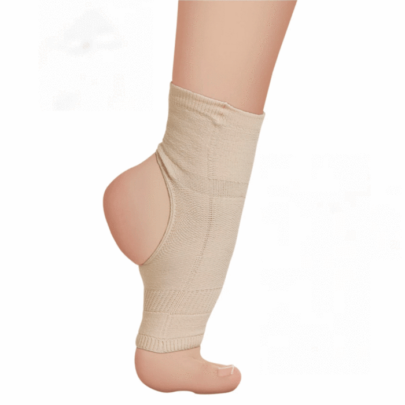
Possible injury
The practice of dancing on pointe, especially in a plantarflexion position, exposes dancers to various risks of ankle injuries. Here are some of the potential injuries associated with this demanding practice:
- Ankle Sprains: Complex pointe movements can increase the risk of ankle ligament sprains, especially when there is poor weight landing on the foot.
- Stress fractures: Frequent repetition of pointing movements can lead to stress fractures, especially if the load on the ankle bones becomes excessive.
- Tendonitis: The tendons surrounding the ankle, particularly the Achilles tendon, can become overused, leading to tendonitis and inflammation.
- Compartment Syndrome: Dancing on pointe can increase pressure in muscle compartments, causing compartment syndrome, a condition where increased pressure can compromise blood flow.
- Bursitis: Repetitive movements can cause inflammation of the synovial bursae, leading to painful bursitis around the ankle.
- Joint stress: Repeated compression of the ankle joints in pointe positions can contribute to long-term joint damage.
- Muscle fatigue: Fatigue of the intrinsic muscles of the foot and the muscles surrounding the ankle can increase the risk of injury because the weakened muscles may not provide adequate support.
- Sesamoiditis: Inflammation of the sesamoid bones below the head of the first metatarsal, often due to excessive pressure during pointe dancing, can cause severe pain.
- Bone spurs: Constant pressure on the bones of the foot can cause bone spurs to form, increasing pain and the risk of complications.
- Chronic Instability: Frequent use of the ankle in the pointe position can lead to chronic instability, making the ankle more prone to recurring sprains.
Conclusion
In conclusion, the demanding practice of classical dance, particularly en pointe, exposes dancers to a range of potential injuries affecting various parts of the body. Ankle injuries remain among the most common, often linked to the intense plantar flexion and complex movements inherent in this artistic discipline.
However, a thorough understanding of these risks and the implementation of preventive measures are essential to ensure the health and longevity of ballet dancers. The contributions of experienced dancers, health professionals, biomechanics researchers, and teachers have been crucial in informing prevention practices, treatment, and promoting a holistic approach to dancer health.
Frequent injuries to the feet, knees, hips, back, tendons, muscles, shoulders, arms, and the potential for physical and mental stress underscore the need for a comprehensive approach to prevention, including muscle strengthening, flexibility, technique education, and special attention to recovery.
Thus, by combining passion for the art of dance with increased awareness of potential risks, ballet dancers can not only express their creativity on stage but also preserve their physical and mental well-being for a sustainable artistic career. Continued collaboration between dancers, health professionals, researchers and educators remains essential to refine prevention strategies and provide comprehensive support to the ballet dance community.

